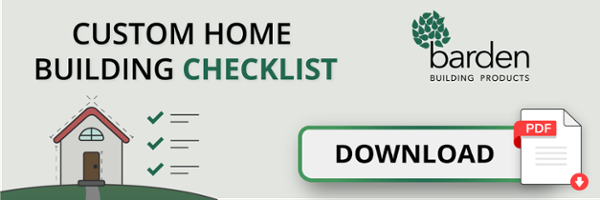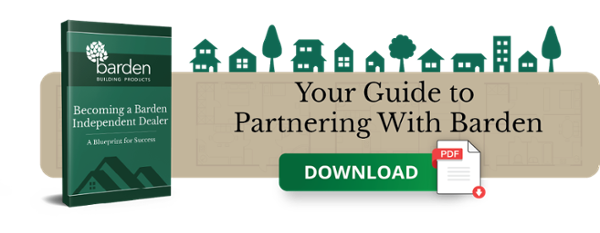
In a custom home building project, there are usually three ideas about how the process will go:
- The future homeowner's
- The builder/dealer's
- The universe's
More often than not, the three versions of the project and how it progresses don't align exactly. Whether it's just a difference of opinions or the unexpected causing a slight delay, the custom home building process is indeed one where there’s an element of fluidity to it.
For the future homeowner, the perception that their project isn't going to plan or is taking too long (one our Independent Dealers hear a lot), is when frustrations can set in.
While no project is perfect and it's nearly impossible to predict to the hour and penny of when a custom home build will be completed, there are discussions to be had to manage client expectations from the onset.
6 Custom Home Construction Project Elements to Cover With Clients
As with any project, the best time to prepare a future homeowner for what to expect as work gets underway on their new custom home is well before it starts. Helping a client go into a project with eyes wide open helps make sure there are fewer "surprises" and keep potential frustrations to a minimum.
Among the most common elements to cover with clients before the project starts include:
- Cost
- (A general) Timeline to completion
- Customization impacts
- Inspections
- Contractor availability
- Site-related delays
1. Cost
We'll start with the most common concern that's brought up by almost every future Barden custom homeowner – the final bill.
The #1 thing every future Barden homeowner should understand is that it's nearly impossible to determine what the final bill will be until the project is completed.
That's not to say that the cost of their home is a moving target and they should expect to pay a drastically different price than what was originally estimated or later quoted. Barring a major overhaul to the project (something the client would be well aware of), the custom home's final cost should be within the same ballpark as what was originally discussed.
However, there are things that can come up during a project that affect costs in real-time, such as:
- Material prices – pandemic lumber prices are a great example
- Labor costs – another pandemic-era example that persists today
- Site prep work – we'll get into this one later
- Permit fees – this can vary by municipality
Again, the final price of a Barden home isn't a moving target nor is it a complete surprise for the homeowner. Rather, it's something that can't be determined to the penny until work is completed.

2. (A General) Timeline to Completion
This one follows suit with cost, and we'll start with the #1 thing every client should know: it's nearly impossible to nail down a date of completion with 100% certainty until the project is nearly complete. Many of the same factors that drive prices also impact completion timelines
Ask almost every future Barden homeowner when they want to move in and they'll probably tell you, "Yesterday." The answer only rings more true for future Barden homeowners in the throes of their build and experiencing some project fatigue.
While it's easy to appreciate the enthusiasm, the simple fact is building a Barden custom home building does take time.
Though our panelized construction methodology does follow a linear path, there's a lot that happens from the day a client commits to a project to when they open the front door to their new home for the first time. What's more, there are a variety of factors that can impact how quickly a build is completed – for instance, a disruption to the supply chain for, say, lumber, can slow down progress.
That's not to say, like cost, a completion date is a moving target that will be drastically different from what was originally discussed. Rather, it just has an element of fluidity to it.
What Does The Custom Home Building Timeline Include?Our Custom Home Building Checklis details the process and every milestone. Download your copy: |
3. Customization Impacts
As we've said many times before, our favorite part about our floor plans is that they are 100% customizable. For a builder, this means it's 100% possible to help a client realize the home of their dreams – one that checks all the "wants" and "needs" boxes.
However, the level of customization to a floor plan does have impacts on the construction process in a few different ways:
During the initial planning stages:
- If the client doesn't have a refined vision for what their dream home could look like, it takes time – and likely several rounds of revisions – to put together a floor plan from scratch.
- The more a client customizes their home, the longer it takes to settle on a final plan. Think of it like buying a car – it's faster to just buy the base model than spend time evaluating every option for a customized vehicle.
During construction:
- Complex designs or elements that require specialty contractors can extend the build time.
- Sourcing specialty materials or one-of-a-kind items (e.g. a custom-shaped granite countertop) can take additional time.
4. Contractor Availability
In a perfect world, anyone needed to help build your client's custom home would be immediately available and ready to start work.
Unfortunately, that's not always the case.
Even if you're also a general contractor and your crew will be handling the build, you'll likely be subcontracting some of the work out – e.g. plumbing, electrical.
hile it helps to have established relationships, trade workers and specialty contractors often have their own clients and schedules, making their availability limited. Another way (and the #1 thing every future Barden homeowner should understand): a custom home project is sometimes at the mercy of contractor availability.
5. Build Site Challenges
This one mostly comes into play with scattered lot construction. The #1 thing every future Barden homeowner should understand is that there are a lot of unknowns that you simply won't encounter until you actually get to the site and get into it.
Beyond the obvious work of clearing and grading the land, building on an unprepped lot, or virgin ground, leaves a lot of room for potential issues to come up – issues that can affect the project moving forward.
Septic system installation is a prime example.
A vital component before septic installation is the perc (percolation) test, which assesses the soil's ability to absorb liquid. If the soil doesn't "perc" well, it can't adequately filter wastewater, potentially leading to system failure or environmental contamination.
Undeveloped lots may also have unpredictable soil consistency, with layers of rock or clay, which can further complicate septic design and installation. Without prior knowledge of the land's specifics, there's also the risk of inadvertently positioning the system close to underground water sources, which can result in contamination.
Installing utilities is another challenge – especially when the home is set back significantly from the road. Running lines to the home can be expensive and complicated as you get further away from existing infrastructure.
6. Inspections
Just like with owning a vehicle, inspections are a simple reality of building a new home. The #1 thing every future Barden homeowner should understand is their home will be subject to multiple inspections.
The frequency and timing of home construction inspections during a project largely depend on the municipality you're building in and its regulations as well as the complexity of the project.
However, in general, for most residential projects there are multiple mandatory inspections at key phases of construction:
- Site Inspection: Before construction starts, some municipalities may require an inspection of the vacant lot to verify proper site boundaries and other pre-construction requirements.
- Foundation and Footing Inspection: Once the footings are excavated and forms are set but before the concrete is poured, an inspection is generally required to ensure proper depth and reinforcement.
- Final Inspection: Conducted after the home is complete, this comprehensive inspection covers everything from safety requirements like smoke alarms to the functionality of home systems to framing, plumbing, and electrical. If everything passes, the home is issued a Certificate of Occupancy.
- Specialized Inspections: Depending on the project and location, additional inspections might be necessary. For instance, septic systems, fireplaces, and retaining walls can each have their own inspection requirements.
And that's not to mention the inspections and project walk-throughs you'll do with the client as work progresses.
Managing the Custom Home Building Process
No matter what, the custom home building process will always be a process. Homes aren't built overnight and making one that is tailored exactly to the client takes time. What's more, just like any other project custom home builds aren't immune to delays or disruptions.
In a sense, preparing clients on the front end by making sure they know what to expect during the process is another way of project management.
Make Our Processes Yours
Learn about all the benefits of becoming a Barden Independent Dealer – including construction efficiencies!



